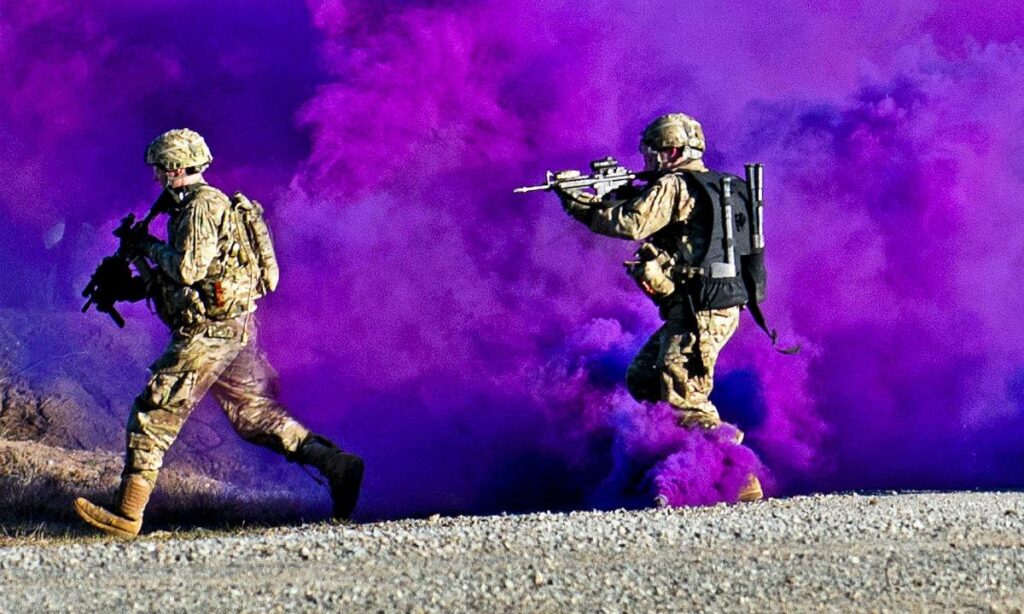In the ever-evolving landscape of military combat medicine, a new era is dawning as advancements in technology and tactics signal the end of the customary ‘Golden Hour’. The once-critical timeframe for saving wounded soldiers on the battlefield is being redefined, leading to a transformative shift in the way the U.S.military approaches medical care in war zones. Join us as we explore this groundbreaking change and its impact on the future of military healthcare.
– Evolving challenges in military combat medicine
The landscape of military combat medicine is rapidly changing, presenting new and complex challenges for medical professionals on the front lines. One of the most important developments is the shift away from the traditional ‘Golden Hour’ concept,which emphasized the importance of rapid medical intervention within the first 60 minutes after injury. While this approach has proven effective in saving lives, advances in battlefield technology and tactics have blurred the lines between the front line and the field hospital, making it increasingly difficult to deliver timely care.
As a result,military medical teams are now facing a host of evolving challenges that require innovative solutions to ensure the best possible outcomes for wounded soldiers. From adapting to the use of drones and autonomous vehicles in combat zones to addressing the growing threat of chemical and biological warfare, the field of military combat medicine is in a state of constant evolution. In order to meet these challenges head-on, medical professionals must be prepared to think outside the box and collaborate across disciplines, leveraging the latest advances in medical technology and tactics to provide the highest level of care to those in need.
– Emerging technologies shaping the future of battlefield care
The advancement of emerging technologies is revolutionizing battlefield care,marking the end of the traditional ‘Golden Hour’ concept in U.S.military combat medicine. With cutting-edge innovations shaping the future of medical treatment on the battlefield, the landscape of combat healthcare is rapidly evolving.
Key technologies such as telemedicine, artificial intelligence, and robotic surgery are playing pivotal roles in enhancing the efficiency and effectiveness of medical interventions in high-stress environments. These innovations are empowering military healthcare providers to deliver rapid and precise care to wounded soldiers, ultimately improving survival rates and outcomes in combat situations.
– Strategies for optimizing medical support in high-intensity conflict
In modern warfare, the concept of the ‘Golden Hour’ – the crucial window of time in which medical intervention can mean the difference between life and death for injured soldiers – is evolving. With the increasing complexity and intensity of conflicts, new strategies are being explored to optimize medical support on the battlefield.
One innovative approach is the integration of advanced telemedicine technologies that allow for real-time interaction between deployed medical personnel and expert medical professionals located remotely. This not onyl provides immediate guidance for treating complex injuries but also enables continuous monitoring and assessment of patients in high-intensity conflict zones. Additionally, the use of autonomous medical drones for rapid casualty evacuation and delivery of critical medical supplies is revolutionizing the way military combat medicine is conducted in the field.
– Balancing speed and quality in trauma care: a new paradigm for military medicine
The traditional concept of the ‘Golden Hour’ in military combat medicine, where swift medical care within the first hour after injury is crucial for survival, is being challenged by the need to balance speed and quality in trauma care. As military medicine evolves, a new paradigm is emerging that emphasizes the importance of not only rapid response but also delivering high-quality care to wounded service members.
This shift in focus requires a reevaluation of how medical teams operate in the field, with an emphasis on efficiency without sacrificing the level of care provided. by implementing new technologies, training methods, and protocols, the U.S. military is paving the way for a more effective and sustainable approach to trauma care on the battlefield. This change signifies a significant step forward in ensuring the well-being and survival of our brave men and women in uniform.
The Way Forward
As the ‘Golden Hour’ fades into history, the landscape of U.S. military combat medicine continues to evolve and adapt. The shifting dynamics of warfare demand innovative approaches to saving lives on the battlefield. While the end of the traditional ‘Golden Hour’ may mark the end of an era,it also signals the beginning of a new chapter in military medical care. With advancements in technology, training, and tactics, the future of combat medicine holds promise for continued improvements in treating the wounded and saving lives in the most challenging of circumstances. As we navigate this new frontier, one thing remains clear – the dedication and commitment of medical personnel to providing the best possible care for those who sacrifice so much for their country.


